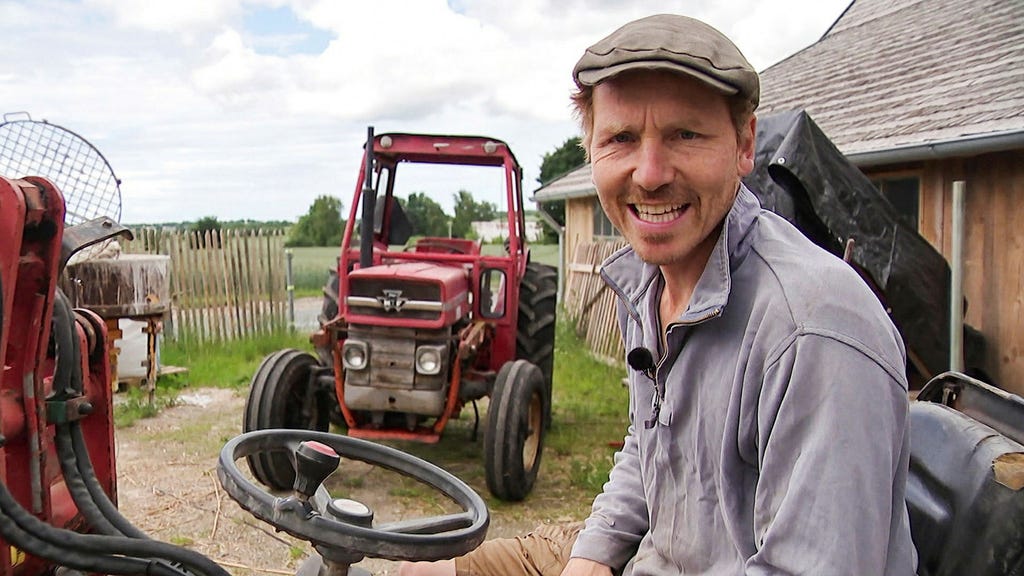Niklas Wahllöf’s journalistic journey, bookended by reflections on the Danish television program ”Hundra procent bonde” (One Hundred Percent Farmer), reveals a surprising connection to the seemingly simple life depicted on screen. His final column in 2012, echoing his first, centers on Solveig, the steadfast horse owned by Frank Ladegaard Erichsen, the show’s unassuming star. This enduring presence, both equine and human, provides a touchstone for Wahllöf, representing a constancy and authenticity that resonates deeply within him. The program, known as ”Bonderøven” (The Peasant) in its earlier iterations in Denmark and later renamed ”Frank & Kastaniegaarden,” follows Erichsen’s journey of near self-sufficiency on his small farm near Aarhus. The enduring appeal of the show, spanning over 31 seasons, lies not in dramatic twists or manufactured tension, but rather in its gentle depiction of a life lived in harmony with nature.
Erichsen’s quiet competence, his pedagogical approach to explaining his daily tasks, from building a watermill to crafting an oil lamp, captivates Wahllöf. The show’s lack of sensationalism, its avoidance of the now-ubiquitous ”lifestyle” tropes, contributes to its unique charm. There are no manufactured exclamations of delight or staged moments of drama. Instead, the program unfolds like a comforting novel, each episode a chapter in the ongoing narrative of life on Kastanjegården. The characters, both human and animal, become familiar and beloved, from Frank’s wife Theresa and their two children, who appear sparingly, to the ever-present Labrador, Kajsa, and of course, the stoic Solveig. Even the transient inhabitants of the farm, the sheep, chickens, and cows, contribute to the tapestry of this rural idyll.
Wahllöf’s unwavering devotion to the program, despite his self-proclaimed limited patience for television, speaks to the profound impact of Erichsen’s unpretentious lifestyle. He readily admits that he possesses neither the inclination nor the skills to emulate Erichsen’s farming practices. The prospect of slaughtering a chicken or building a windmill remains firmly outside his realm of experience. Yet, he finds himself drawn back to the show time and again, absorbing every detail, from the swing of the hammer to the planting of seeds. The vicarious pleasure he derives from witnessing Erichsen’s self-reliance offers a counterpoint to the complexities and pressures of modern life.
The appeal of ”Hundra procent bonde” transcends mere entertainment; it offers a form of therapeutic escape. Erichsen’s genuine lack of interest in fame, a fact noted with some disappointment by the Danish tabloids, contributes to the show’s authenticity. The absence of contrived emotion or manufactured drama creates a space of tranquility and contemplation. In a media landscape saturated with hyperbolic pronouncements and manufactured excitement, the quiet rhythm of life on Kastanjegården offers a welcome respite. The program provides a sanctuary from the noise and demands of the outside world, allowing viewers to immerse themselves in the simple pleasures of rural life.
Wahllöf draws a parallel between the show’s enduring appeal and its therapeutic qualities. In a world of fleeting trends and manufactured emotions, ”Hundra procent bonde” offers a sense of stability and connection. The program’s gentle pace, its focus on traditional skills and self-sufficiency, provides a counterpoint to the fast-paced, consumer-driven culture that dominates modern life. For Wahllöf, the show has become a touchstone, a reminder of a simpler, more grounded way of being. This connection is so strong that he has become known to defend his viewing habits to bewildered family members, proclaiming, “But I’m watching Frank!” as they attempt to draw his attention away from the screen.
In his farewell column, Wahllöf extends a heartfelt tribute to Erichsen, his family, and the inhabitants of Kastanjegården. His parting wish, directed at Danish public broadcasting, is a plea for the show’s continuation. This sentiment reflects the deep connection he has forged with the program and its characters. ”Hundra procent bonde” has become more than just a television show for Wahllöf; it has become a source of inspiration, a reminder of the enduring power of simplicity, and a testament to the enduring appeal of a life lived in harmony with nature. His hope, expressed in his final words, is that the program will continue to provide solace and inspiration to viewers for years to come.














